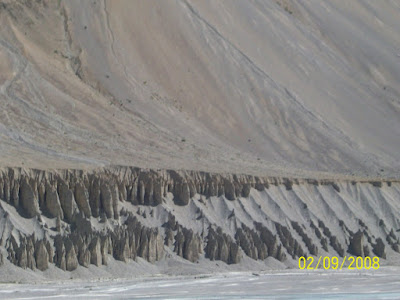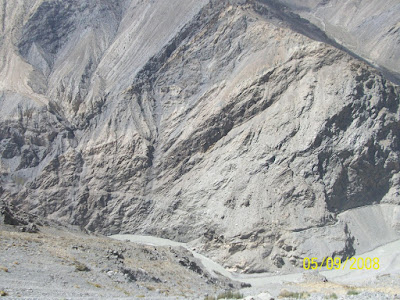History of water supply for Shimla
The history of the water supply in Simla is extremely interesting, firstly, because it relates to great engineering feats, and secondly, because water vitally concern the health and existence of the population of the town. Roughly speaking the water supply has cost to the date about 54 lakh rupees. Prior to 1880 Simla depended partly on local ‘baolies’ (springs), and partly on the reservoir fed by the water issuing from two tunnels bored a short distance into Jakhoo on either side of the Combermere bridge ravine.
In 1880 the first serious attempt was made to tackle the water problem, when some 15,000 acres of land was accuired on the south of Mahasu ridge from the Rana of Koti. This was the beginning of the now extensive Catchment area, and a 6" pipeline eleven miles in length was laid to deliver water in the new reservoirs at the church and Sanjoli and this pipe gave and still give, a discharge of 60,000 gallons per day during the hot weather.
In 1893 the catchment area was extended to the old toll-bar on the Mashobra road, and two stem engines were installed at Cherot Nullah, 1,300 feet below the Hindustan Tibet road and the supply increased about 150,000 gallons daily.
This again proved insufficient, so in 1899 a second gravitation pipe line, four miles in length, was constructed to tap at the lower level the same stream as the pipe laid in 1880.
This added 150,000 gallons daily to the supply available for the pumping at Cherot where a third stem pumping engine was installed, and a large storage reservoir holding 2 and a half million gallons was built at Seog in the Catchment area forest.
Then came the railway and increasing requirements in connection with the new sewage works and the demand again rose above the supply, and 1913 saw the installation under the able direction of Captain B.C. Battye R.E.L., of the Chaba electricity generation station on the Sutlej and the Chair pumping station on the ravine below Fagu and Shali peak.
The capacity of Chair station is 300,000 gallons lifted by ram pumps driven by the electric motors to a height of 3,000 feet, to the tank above Hindustan-Tibet road about 9 miles from Shimla. From this tank the water run by gravitation in 6" and 7" mains via Kufri and Charabra. Into the Catchment area to Dhali, and there the whole of the water from the Chair, Cherot and the Catchment area is filtered in slow sand filters and then goes on in 3 pipes of various sizes to Sanjouli.
In 1941 advantage was taken of the electricity to install at Cherot a turbine pump driven by an electric motor, and from this date it was possible to dispense with the services of number of wood cutters and coolies who had hitherto provided fuel for the boilers working the steam pumps. The presence of this large body of workmen in the Catchment area had always been objected to by the sanitary authorities.
It was then hoped that the Chair extension would suffice for the needs of the station for some years, but the new generation arose which demanded considerably more comfort and convenience.
Visitors at hotels clamored for English baths and sanitation, Government offices were no longer satisfied with primitive sanitary methods, and the owners and the tenants of the houses who had previously been content with the one tap in the compound, wanted water laid on to the bathrooms, kitchens and pantry. In additions to these demands the Municipal Committee encouraged the builders of the new houses to install sanitary fittings, and commenced replacing obsolete Municipal latrines with those of the modern type.
However, in 1919 a definite scheme was placed before the local government for pumping from the Guma on the Nauti River 4,000 feet below Mashobra.
In 1920 Mr. A.F. Henderson was placed on special duty to prepare the Guma Pumping Project in detail, and was sanctioned in 1922, and completed at the end of 1924. at Guma there are two electricity driven ram pumps, each capable of lifting 35,000 gallon per hour, to the reservoir on the ‘Craignanao’ estate, now the property of the United Service Club, at the height of 4,000 feet above Guma. This lift is reputed to be the highest for water works purposes in the world, and the pressure on the pumps there is over quarter of a ton per square inch. The rising mains are of steel, varying in thickness from an half an inch at Guma to quarter inch at Craignano. At Guma the water passes through settling tanks and then after treatment with alum to coagulating tanks and finally to Paterson filters, but as a second safeguard the water is treated at ‘Craignano’ an 18-inch main leads to the reservoir at Mashobra and thence a 12-inch main takes the water to Sanjouli reservoir.
From this brief description it will be gathered that the Guma scheme is unique in the history of waterworks undertakings, and after he has designed it the execution was also entrusted to Mr. Henderson who was assisted by Mr. Main.
The distribution system in Shimla is intricate, for not only the pressure in the mains be reduced at intervals, but arrangements also exists through which pressure may be augmented in case of fire, and the whole system is controlled by an elaborate system of recording meters and valves in order that leakage may be readily detected. All houses connections are metered, and probably Shimla is the only town in India, where this wise policy has been consistently pursued by the Municipal Committee.
 The heritage toy train meandring up through the lesser Himalayas into Shimla hills.
The heritage toy train meandring up through the lesser Himalayas into Shimla hills. Into the Himalayas among the tree of Gods, Himalayan Cedar
Into the Himalayas among the tree of Gods, Himalayan Cedar Himalayan Pied Woodpecker
Himalayan Pied Woodpecker The snow leopard
The snow leopard Church ta Kotgarh
Church ta Kotgarh


 Beas, flowing down with its glacial waters
Beas, flowing down with its glacial waters weawing Shawl is the major industry in Kullu valley
weawing Shawl is the major industry in Kullu valley Poplar and Cedar pine forest on the left bank of Beas river in Manali
Poplar and Cedar pine forest on the left bank of Beas river in Manali Rahala waterfalls on the way to Rothang pass
Rahala waterfalls on the way to Rothang pass A glacier on the right bank of Chandra river, on the way to Kunzum pass from Manali
A glacier on the right bank of Chandra river, on the way to Kunzum pass from Manali 'Chandertal' - the moon lake.
'Chandertal' - the moon lake. Upto Kunzum pass.
Upto Kunzum pass. Kunzum pass. Elevation - 4551mts. from mean sea level.
Kunzum pass. Elevation - 4551mts. from mean sea level. Losar village - the first permanent settelment after Manali.
Losar village - the first permanent settelment after Manali. Dunes formed by glacial erosion
Dunes formed by glacial erosion
 Approaching Kaza, the divisional headquarter of Spiti
Approaching Kaza, the divisional headquarter of Spiti A gorge at Kibber village
A gorge at Kibber village Kibber village
Kibber village Traditional mud houses at kibber village
Traditional mud houses at kibber village Fresh snow fall at Pin valley
Fresh snow fall at Pin valley
 A diverse alpine flora can be seen in Pin valley
A diverse alpine flora can be seen in Pin valley
 A ropeway is the common way of getting to the other side of Pin river
A ropeway is the common way of getting to the other side of Pin river Kungri monastery in Pin valley
Kungri monastery in Pin valley Its me on the right and my friend Jacob at Kungri monastery
Its me on the right and my friend Jacob at Kungri monastery
 A lamp being lit up by using yak butter
A lamp being lit up by using yak butter Leaving Pin valley
Leaving Pin valley Top floor of Dhankar monastery
Top floor of Dhankar monastery A gorge on the way to Nako village
A gorge on the way to Nako village
 Sumdo, police check post
Sumdo, police check post

 Maling gorge
Maling gorge Nako village, with fresh snow covered Himalayas in the background
Nako village, with fresh snow covered Himalayas in the background

 A life in safe hands..........
A life in safe hands.......... A traditional house at Nako village
A traditional house at Nako village A drive down to Khab
A drive down to Khab Khab, the confluence of Satluej and Spiti river
Khab, the confluence of Satluej and Spiti river A valley bridge being built at Spello
A valley bridge being built at Spello Goddess Bhima Kali temple at Sarahan
Goddess Bhima Kali temple at Sarahan Palace of Maharaja of Bushair Province
Palace of Maharaja of Bushair Province

 Sarasawati, the goddess of knowledge
Sarasawati, the goddess of knowledge Enterance of the Bhima Kali temple and end of our tour
Enterance of the Bhima Kali temple and end of our tour